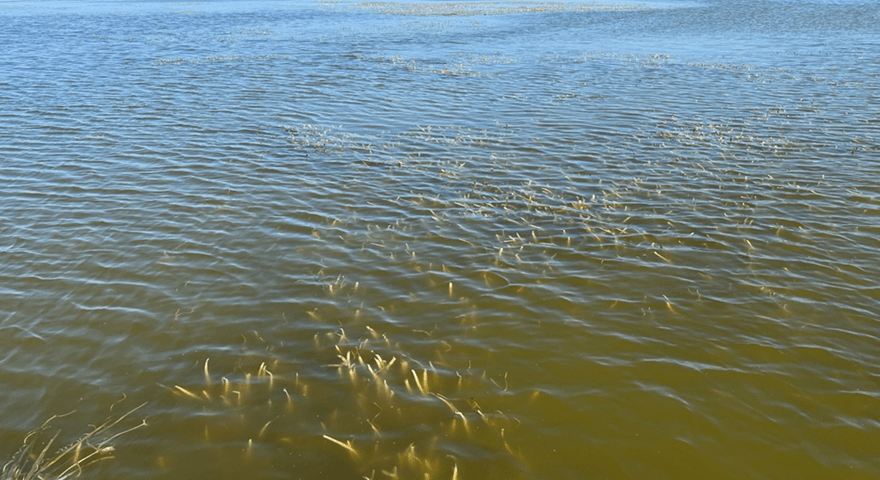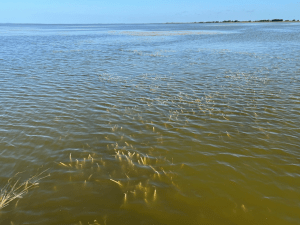Continued success in native planting efforts enhances Lake Apopka’s health

Captured in June 2024, this image highlights the successful establishment of native submerged aquatic vegetation throughout the lake. The flourishing eelgrass reflects the positive impact of our restoration efforts.

Captured in June 2024, this image highlights the successful establishment of native submerged aquatic vegetation throughout the lake. The flourishing eelgrass reflects the positive impact of our restoration efforts.
PALATKA, Fla. Aug. 13, 2024 — Lake Apopka, Florida’s fourth-largest lake, is experiencing a revival thanks to a four-decade, $200 million restoration effort led by the St. Johns River Water Management District and its partners. These restoration efforts, which focus on wetland restoration, phosphorus reduction and habitat enhancement, have achieved a 69% decline in phosphorus concentrations and a 93% increase in water clarity as of 2023.
As water clarity has increased, the next restoration step has been reviving and accelerating the growth of submerged aquatic vegetation (SAV). SAV had been absent from the lake for nearly 50 years, and historically formed the critical habitat that supported the lake’s world class bass fishery. Native SAV now covers approximately 95% of the lake’s perimeter, a substantial improvement from 1994 when SAV was nearly nonexistent. Collaborating with the Florida Department of Environmental Protection (DEP) and the Florida Fish and Wildlife Conservation Commission (FWC), the District has successfully planted over 100 acres with native SAV, totaling 500,000 plants. Additionally, more than 28,000 native floating-leaved plants, such as lilies and lotus, have been introduced, enhancing submerged habitat on over 10 acres. These plants are now reproducing and spreading throughout the lake, including offshore areas well away from any planting plots.
The District’s Governing Board recently approved the renewal of a contract with AquaTech to continue planting efforts for the next year, which will help facilitate an additional 23 acres of planting. Though the planting areas are relatively small, each plant has the potential to produce hundreds or thousands of seeds, building a robust seed bank and promoting continued expansion.
Recent funding from the 2024 legislature bolstered restoration efforts, with $5.5 million for Lake Apopka. Currently, native plantings are thriving. Recent photos show that eelgrass beds are filling in well and spreading beyond their initial areas. New grass beds are even emerging in unplanted zones. Moving forward, the District and FWC will continue their focus on promoting growth of native species to expand and provide critical habitat.
For more information about Lake Apopka’s restoration and ongoing projects, please visit www.sjrwmd.com/waterways/lake-apopka.

